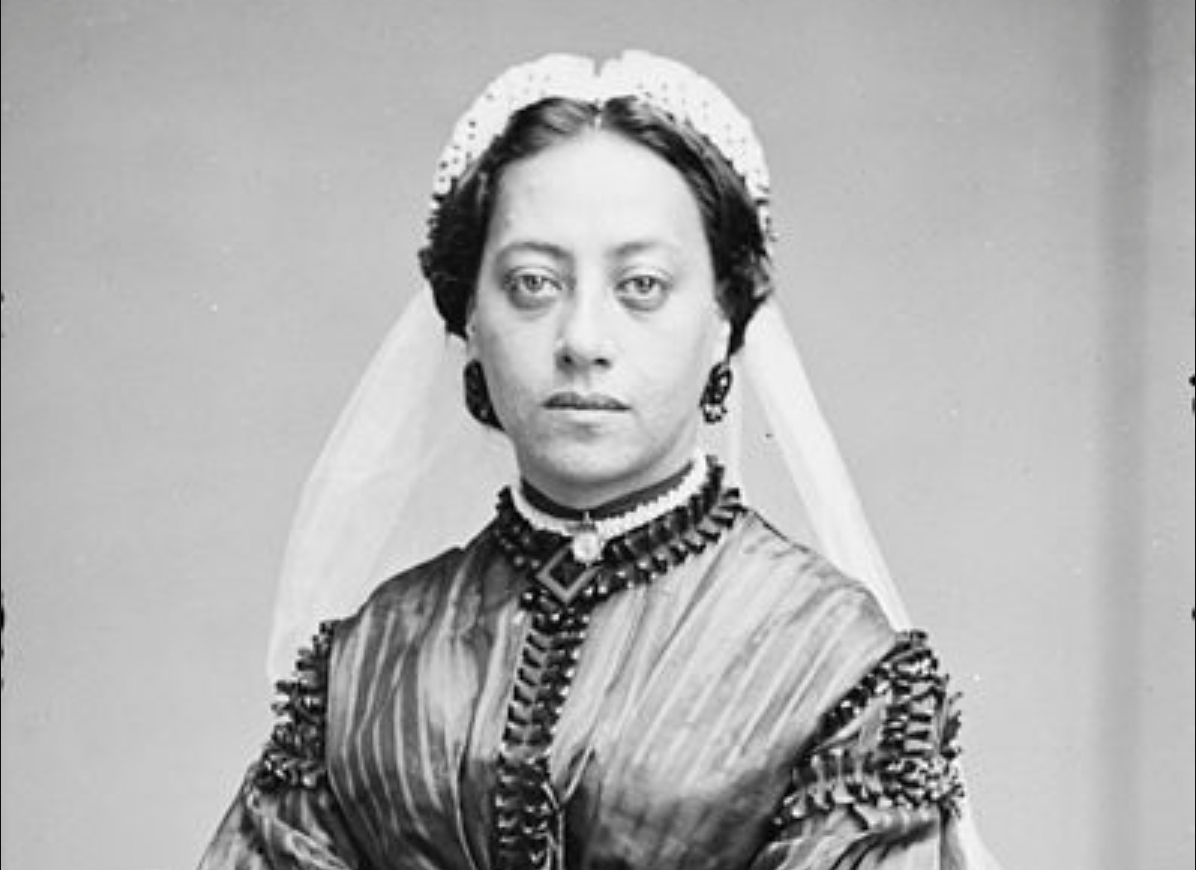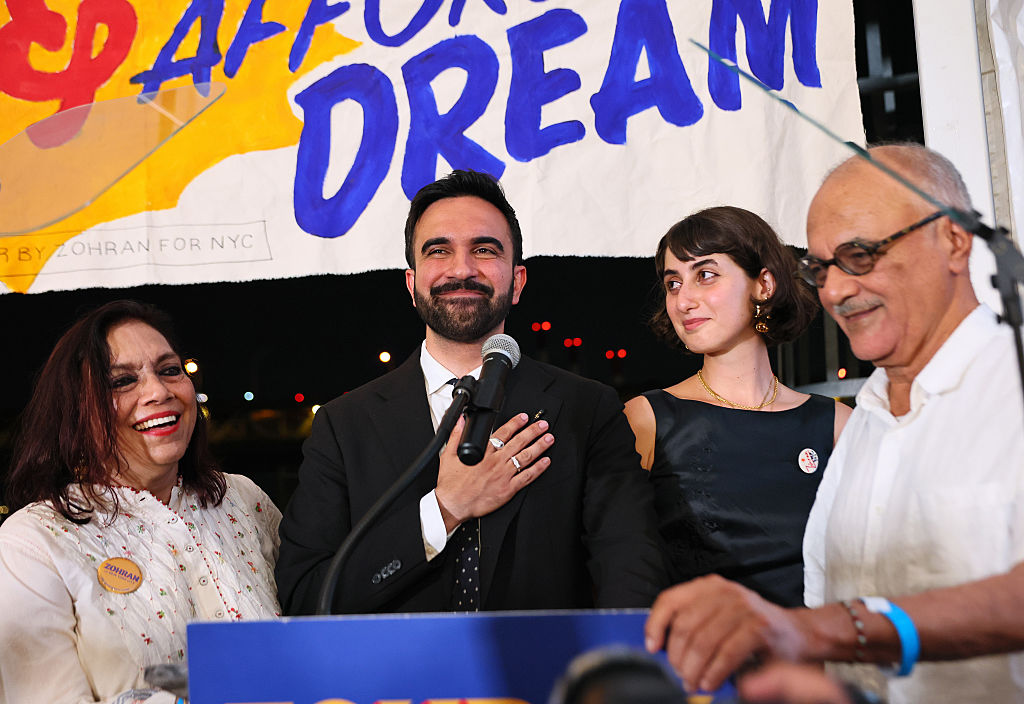Ghost Of Mary Ellen Pleasant: Voodoo Queen Of San Fransisco
Ghost Of Mary Ellen Pleasant: The Voodoo Queen Of San Francisco

Source: Mary Ellen Pleasant / NAPA History
America has a fascination with ghosts and haunted houses
On the corner of Octavia and Bush in San Fransisco sits a small park filled with big lore. Being the city’s smallest park, Mary Ellen Pleasant Memorial Park may seem insignificant to most people unfamiliar with its history. The park was named after one the most powerful Black women to ever live in America. Now, Mary Ellen Pleasant’s spirit haunts the park that was built on her once bustling estate. In this episode of Black Folklore, we dive into the story of the ghost of Mary Ellen Pleasant, the voodoo queen of San Fransisco.
MORE: The Black Town Of Nicodemus And The Enslaved African Prince Who Inspired A ‘Promised Land’
San Fransisco, like many other American cities, is filled with tourists clamoring to indulge themselves in the ghost stories that help make the city unique. At Mary Ellen Pleasant Memorial Park, Mary Ellen’s ghost is said to summon chills, frighten dogs, and sometimes even catapult nuts from her trees at tourists and onlookers wanting a show. But the woman who was once described by San Francisco newspapers as a Voodoo sorcerer who was once seen eating a man’s brains was actually one of the richest, most powerful people in the city. Before 1900, Pleasant had amassed a fortune of $30 million (around $650 million now). But how did such a powerful woman, die in poverty? This is America and tragedy is something this country has a history in.
Although Pleasant’s origins are hard to pinpoint, the New Fillmore suggests she was more than likely born a slave around 1814 in Georgia. She was later purchased and freed, only to work as an indentured servant in Rhode Island and Nantucket, Massachusetts. There she married an abolitionist who made a good living working as a carpenter. Although her situation was better than most Blacks at the time, Pleasant was determined to help her people. She spent the next few years helping enslaved Backs escaped the South on the Underground Railroad.
In 1852, Pleasant decided to head west, fleeing prosecution under the Fugitive Slave Act.
The Fugitive Slave Act, enacted in 1793, was a pair of federal laws that allowed for the capture and return of runaway enslaved people within the territory of the United States. The new Gold Rush enticed her, and she decided to move to San Francisco with plans of expanding the Underground Railroad out west.
Being able to pass as a white woman, Pleasant used this to her advantage. She had inherited a hefty sum of money from her first husband, and San Francisco was the perfect place to invest. She opened laundries, dairies and exclusive restaurants to serve the gold miners and politicians, mostly men. Pleasant was then able to partner with a white banker named Thomas Bell, expanding her businesses into a mini-empire. Soon Pleasant was a household name in San Francisco, even the powerful elites acknowledged her as a successful businesswoman. But Pleasant had a hidden agenda. Her plan was to use her newfound power and status to leverage better opportunities for Black people. Pleasant never hid her identity from the Black residents of San Francisco. They too kept her race a secret and in turn, she used her status to secure housing, jobs and loans for the city’s Black residents. She also funded legal battles and fought for the city’s elites to hire Black faces. Pleasant would soon be known as “Black City Hall” by her peers.
https://www.instagram.com/p/CKw-EfChYv3/
Pleasant would never be able to completely let go of her abolitionist roots and in 1857, she left San Francisco for two years to help famed abolitionist John Brown kickstart the Civil War with the Harper’s Ferry Revolt. When John Brown was executed, a note was found in his pocket from Pleasant. She has donated $30,000 to John Brown’s fight (that’s almost $1 million today).
When Pleasant arrived back in San Francisco she once again partnered with Thomas Bell to build an extravagant mansion on the corner of Octavia and Bush. But word spread of Pleasant’s activism with John Brown, which amplified the rumors that she may also be Black. These revelations infuriated local White elites. The gossip began to affect her businesses, some calling her new mansion a brothel. City newspapers began to print rumors of witchcraft and orgies happening at her estate. There was no way San Francisco’s White establishment was going to allow a Black woman to wield so much power, but Pleasant continued to fight them. On the post-Civil War census, she finally identified herself as “Black” and began litigating for equality. In 1866, she filed two lawsuits successfully attacking racial discrimination after she was removed from a San Francisco street car because she was Black. She won her case in the Supreme Court, which led to the outlawing of segregation on San Francisco’s public conveyance.
This success only amplified the nasty, despicable rumors that were being spread about Pleasant. In 1883, she became embroiled in the trial of Nevada Sen. William Sharon, who was accused of seducing and abandoning young women. Lawyers in the case claimed Pleasant used dark forces to manipulate a young woman into seducing the young woman. Instead of denouncing the rumors she fed into their fears by walking into court with a voodoo doll and claiming she would use it to bring death upon Sharon. Ironically, he did die during the trial. This made Pleasant’s status as the “voodoo queen” larger than life. Sadly, this would be the beginning of the end for Pleasant. Rumors compounded and more scandals followed. In 1899, her business partner Thomas Bell was found dead in Pleasant’s mansion. Bell’s widow teamed up with the San Francisco Chronicle to print a full-page smear piece on Pleasant titled “The Queen of the Voodoos,” where they called her a monster, accusing her of witchcraft and the murder of Thomas Bell. Pleasant was demonized for the rest of her life. She died in 1904 in her 90s. Before she passed she wrote three autobiographies.
In 1928, Pleasant’s mansion was knocked down, leaving only the eucalyptus trees she planted before she died. In 1974, the city of San Francisco designated the trees that Pleasant had planted as a Structure of Merit, naming the space Mary Ellen Pleasant Memorial Park.
Whether or not the voodoo queen San Francisco still roams the park today is a mystery. But what isn’t is the legacy of Mary Ellen Pleasant. Her story has so many parallels to today’s society. From racism to fake news, Mary Ellen Pleasant saw it all and persevered. Her story deserves to be told as much as any Black story from American history.
SEE ALSO:
Black Folklore In Video Episode 8: ‘Free’ Frank McWorter
The Black Seminoles: How Fugitive Slaves Escaped To Mexico Before The Civil War
















